Online Advertising: How to Create Effective Online Ad Campaigns
Online advertising is one of the most effective ways for businesses of all sizes to expand their reach, find new customers, and diversify their revenue streams.
With so many options available – from PPC and paid social to online display advertising and in-app ads – online advertising can be intimidating to newcomers, but it doesn’t have to be. WordStream makes online advertising easy, and we’ve helped thousands of businesses grow by leveraging the power of paid search and paid social advertising.
Online Advertising: Paid Search
When you think of online advertising, the chances are pretty good that you’re thinking of paid search advertising. Paid search – also known as pay-per-click advertising, or PPC – is one of the most common and effective types of online advertising.
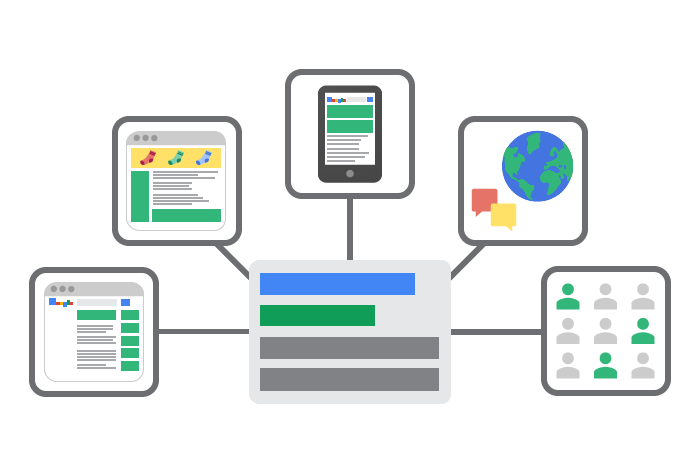
Image via Google
Paid search allows you to bid on relevant terms and phrases that may cause text-based ads to be displayed to users when they enter specific search queries into Google or Bing. These terms and phrases are known as keywords, and they form the basis of PPC advertising. Advertisers bid on keywords as part of an ad auction. This ensures that all advertisers have a fair chance of their ads being displayed to users, rather than those with the biggest advertising budgets.
Keywords should be highly relevant to your business, organized and structured into logical ad groups separated by campaign type, and aligned with the correct match type in order to be displayed to the right visitors, at the right time, for the right campaign.
Online Advertising: Paid Social
While paid search may have transformed Internet advertising, paid social is transforming the web of tomorrow.
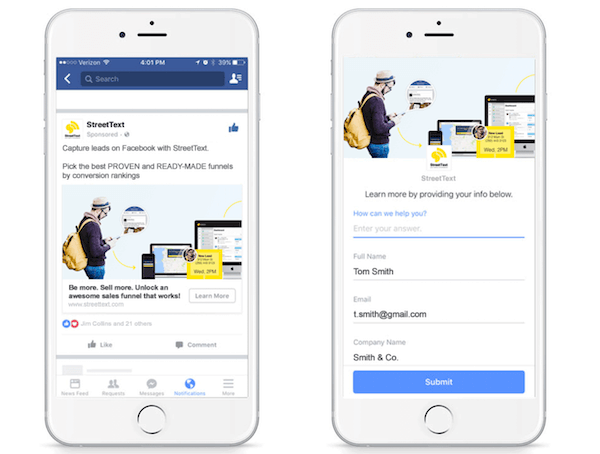
Social networking remains the most popular online pastime for adults all over the world, and advertisers have evolved their strategies to target consumers where they spend their time, namely on social networks such as Facebook and Twitter. Paid social advertising functions similarly to paid search, with the notable exception that advertisers, not users, take the initiative – advertisers must “search” for users, rather than the other way around.
One of the greatest strengths of paid social advertising is the granularity with which advertisers can target prospective customers, and this principle underpins many social advertising platforms and products. Advertisers can target users with hundreds of parameters, from demographic data (such as age, gender, income, level of education, and marital status) to browsing preferences and social behavior.
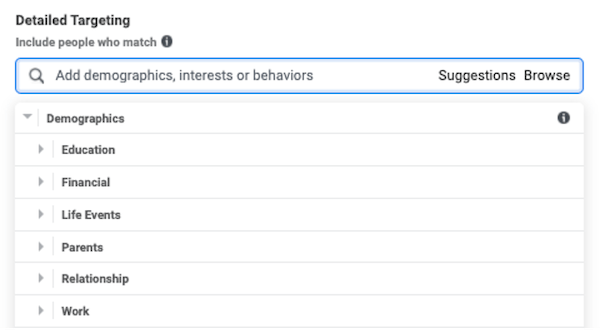
Facebook allows advertisers to target users based on their level of educational attainment, and even specific schools attended.
Advertisers can also target users based on the types of pages and profiles they follow, the things they buy, and the news they read. These custom audiences can be created from existing customer data (to create “lookalike” audiences of similar users) to email lists, which Facebook and Twitter can pair with their data about these users to reveal greater insights about their behavior.
Read this blog post to learn just how specific advertisers can be when it comes to custom audiences – you may be surprised by how deep you can dig.

An example of Facebook’s targeting options based on purchasing behavior
The rise of so-called “identity marketing” has proven to be the latest – and arguably, the most profound – shift in digital marketing of the past decade, offering advertisers unbelievable opportunities to grow their business. To learn more about Facebook’s targeting options, read this PPC University lesson by WordStream Founder and CTO, Larry Kim.
Know Your Audience
Just as paid search advertisers have to conduct in-depth keyword research before launching their campaigns, paid social advertisers have to know their ideal customers inside and out to ensure that they’re targeting the right audience segments with the right messaging. This is where buyer personas come into play.
Creating detailed buyer personas for your ideal customers allows you to go beyond surface-level information about your most loyal customers and delve into targeting options that allow you to target your prospective customers with a high degree of granularity. This not only allows you to maximize the effectiveness of your advertising spend, but also offers more relevant, targeted ads to your audience – recent data shows that people actually appreciate online advertising more when it’s highly targeted and relevant to their interests.
Online Advertising: Campaign Elements
There is much more to online advertising than simply placing an ad on the Internet and hoping for the best. The most effective advertising campaigns combine numerous interconnected elements, all of which perform unique functions to maximize the campaign’s potential. Not every digital advertising campaign will have every element, but the following components of a digital marketing initiative will be common to many campaigns.
Text and Visual Ads
Google Ads and Bing Ads offer advertisers the choice of either text-based ads or more visual advertisements, such as banners. Text-based ads are often referred to simply as PPC ads, whereas banners and similar ad formats are commonly referred to as display ads. In addition, social media platforms such as Facebook offer highly visual advertising formats that include some ad copy, which can be thought of as a combination of both. There are dozens of advertising formats available to today’s advertisers, allowing you to choose the format and advertising network that best suits the needs of your campaigns.
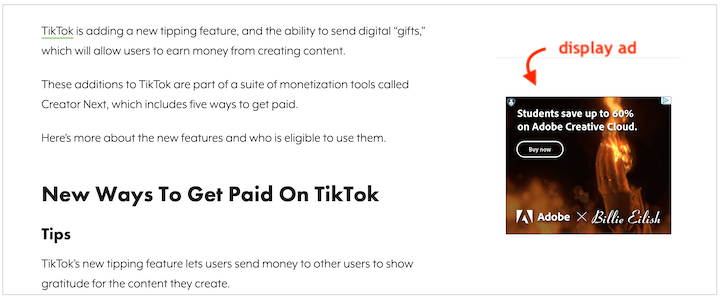
An example of a display ad on the Google Display Network.
Image via Google
Landing Pages
Landing pages are specialized, optimized web pages that visitors are taken to upon clicking an ad. Landing pages can feature specific products featured in the advertisements themselves, or they may include prompts for users to provide the advertiser with more information, such as web forms. Landing pages can be used to convince prospects to complete an action, such as making a purchase, or function as another step in a longer “funnel,” such as requesting additional information or downloading a piece of content for lead generation purposes.
Call Tracking
To many advertisers, phone calls are the most valuable source of leads. For this reason, advertisers can choose to track phone calls generated from online advertising campaigns.
Sponsored Content
Many advertisers choose to utilize sponsored content as an element of their online advertising campaigns. Sponsored content can take many forms, from advertorial-style editorial content featured on websites (commonly known as native advertising), to sponsored updates on social media platforms. Both Facebook and Twitter offer advertisers this feature, with both platforms boasting a wide range of sponsored update options, such as Facebook’s Promoted Posts and Twitter’s Sponsored Tweets.

Example of a Promoted Post on Facebook. Image via Facebook
Analytics
Advertisers do not simply publish ads to the web and hope for the best – they must know exactly how well their ads are performing, and from where their traffic is coming. This is why analytics is a crucial component of any online advertising strategy. Analytics tools offer a wealth of information about an advertising campaign, from impression share and click-through rate to cost-per-conversion and trends over time. Analytics tools are also invaluable in determining how consumers discover and ultimately interact with your website, a process known as attribution modeling.
Email Marketing
Email marketing is one of the most common elements in an online advertising campaign. Some advertisers launch email-only campaigns to highlight time-specific offers or content downloads, whereas others use email to complement their other digital marketing channels. Email marketing can be highly effective, making it a popular choice for today’s advertisers.
Remarketing
Consumers rarely discover a website and decide to make a purchase immediately. The customer journey can be lengthy and complex, and take place across multiple devices and websites over prolonged periods of time. For this reason, remarketing has become one of the most important tools in a digital marketer’s toolbox. Remarketing allows you to track users who have visited your website – but failed to convert or take action – once they leave your site, and serve ads to them on other websites. This not only significantly increases brand awareness, but also provides numerous further opportunities for the user to revisit your website and convert at a later time. Remarketing can be enabled on search and display campaigns, as well as social advertising initiatives.
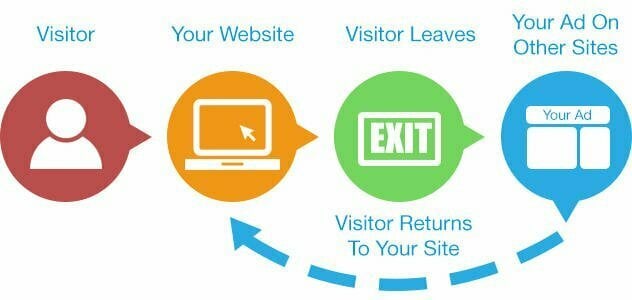
PPC and Paid Social – The Perfect Combination
Combining the reach of paid search and the granularity of paid social is the most effective way to maximize your return on investment, reach new customers, and grow your business.
